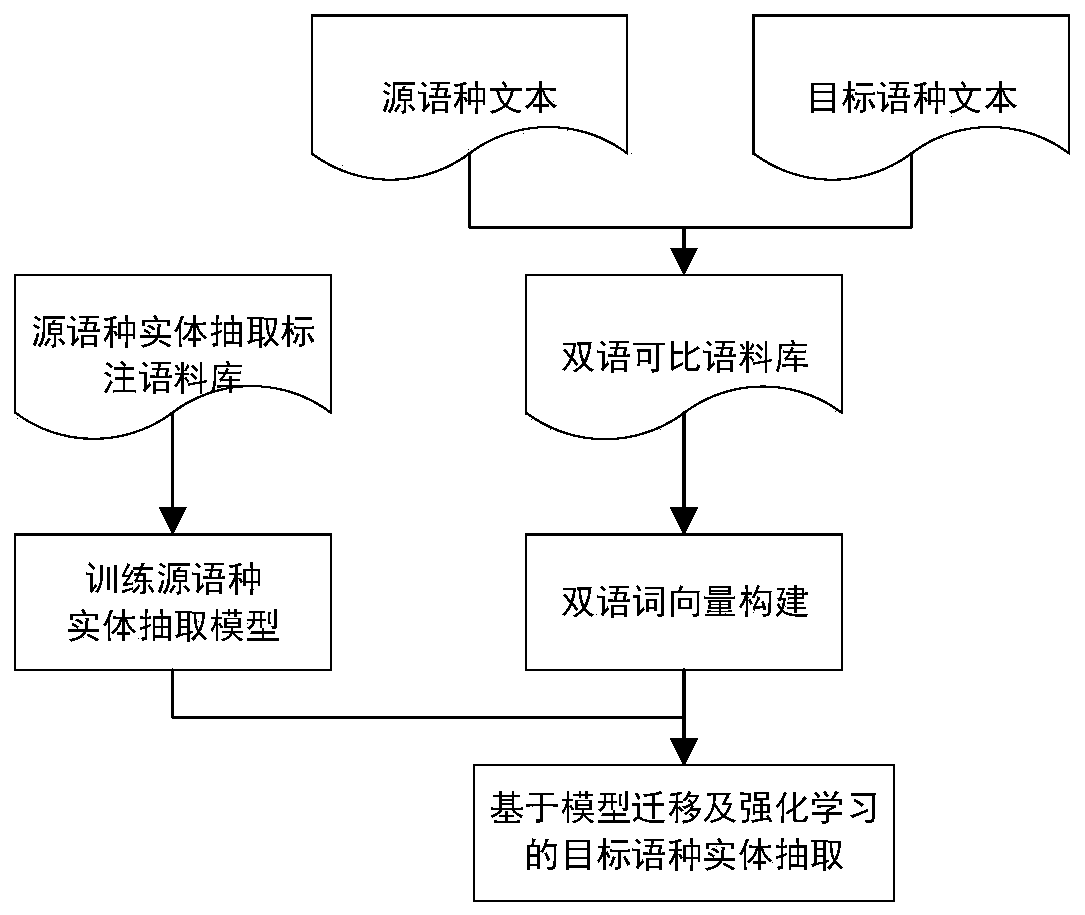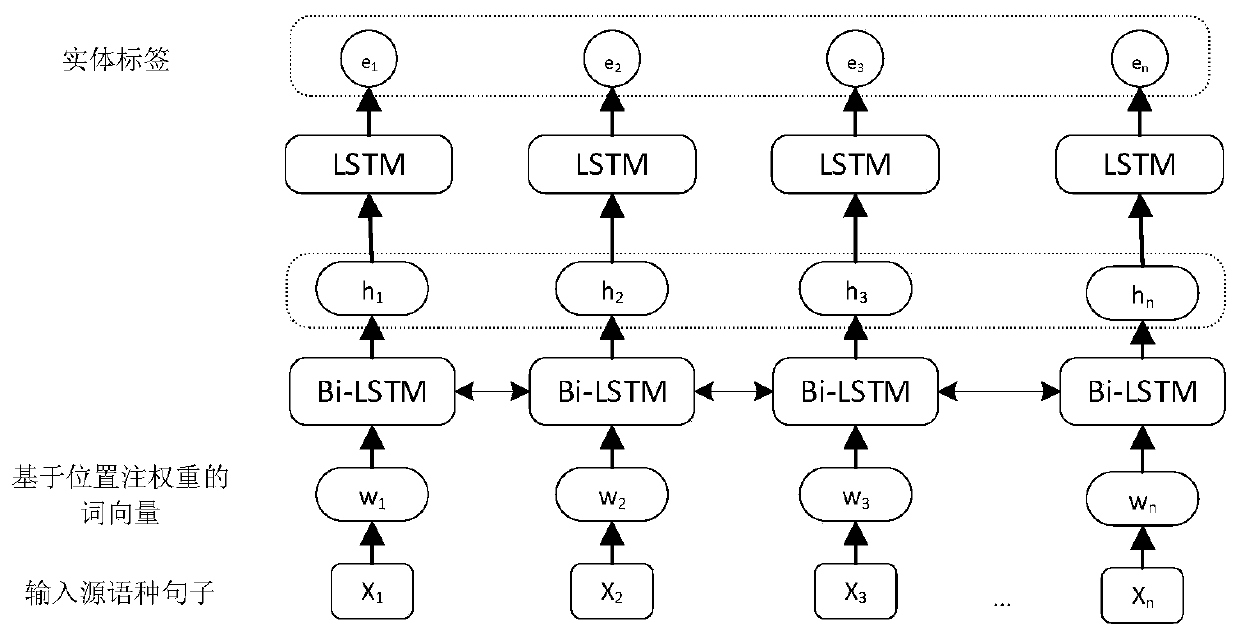Low-resource language entity extraction method based on bilingual word vectors
A technology of entity extraction and word vector, applied in the field of information extraction, can solve problems such as unsupervised learning, and achieve the effect of unsupervised learning
- Summary
- Abstract
- Description
- Claims
- Application Information
AI Technical Summary
Problems solved by technology
Method used
Image
Examples
Embodiment Construction
[0027] The present invention will be described below in conjunction with the accompanying drawings and specific embodiments. It should be understood that the specific examples described here are only used to explain the present invention, not to limit the present invention.
[0028] The present invention proposes a low-resource language entity extraction method based on bilingual word vectors. Combine bilingual word vectors, reinforcement learning models, and model transfer methods to achieve unsupervised entity extraction in the target language, and enrich the text information in the target language through resource-rich source language text information.
[0029] figure 1 The flow of the low-resource language entity extraction method based on bilingual word vectors is shown, and each step of the method is described in detail:
[0030] Step 1: Build a bilingual comparable corpus by obtaining public texts in the source and target languages.
[0031] Due to the lack of data i...
PUM
 Login to View More
Login to View More Abstract
Description
Claims
Application Information
 Login to View More
Login to View More - R&D
- Intellectual Property
- Life Sciences
- Materials
- Tech Scout
- Unparalleled Data Quality
- Higher Quality Content
- 60% Fewer Hallucinations
Browse by: Latest US Patents, China's latest patents, Technical Efficacy Thesaurus, Application Domain, Technology Topic, Popular Technical Reports.
© 2025 PatSnap. All rights reserved.Legal|Privacy policy|Modern Slavery Act Transparency Statement|Sitemap|About US| Contact US: help@patsnap.com



